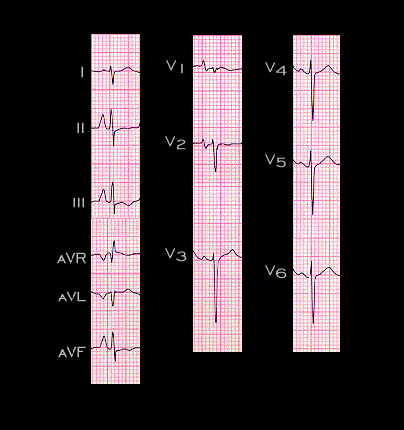
This ECG is from a 53 year female with severe COPD. Note the characteristics of the P wave in the frontal plane (limb) leads and determine its spatial vector. Also note the initial and terminal components of the QRS complex in the limb leads. Determine the axis of each component and try to construct the vector loop. Then, note the small QRS complex in V1 and the deep S waves in leads V3-V6. In many ways the tracing is similar to that seen in patients with mitral stenosis. However, the P waves are markedly different.
